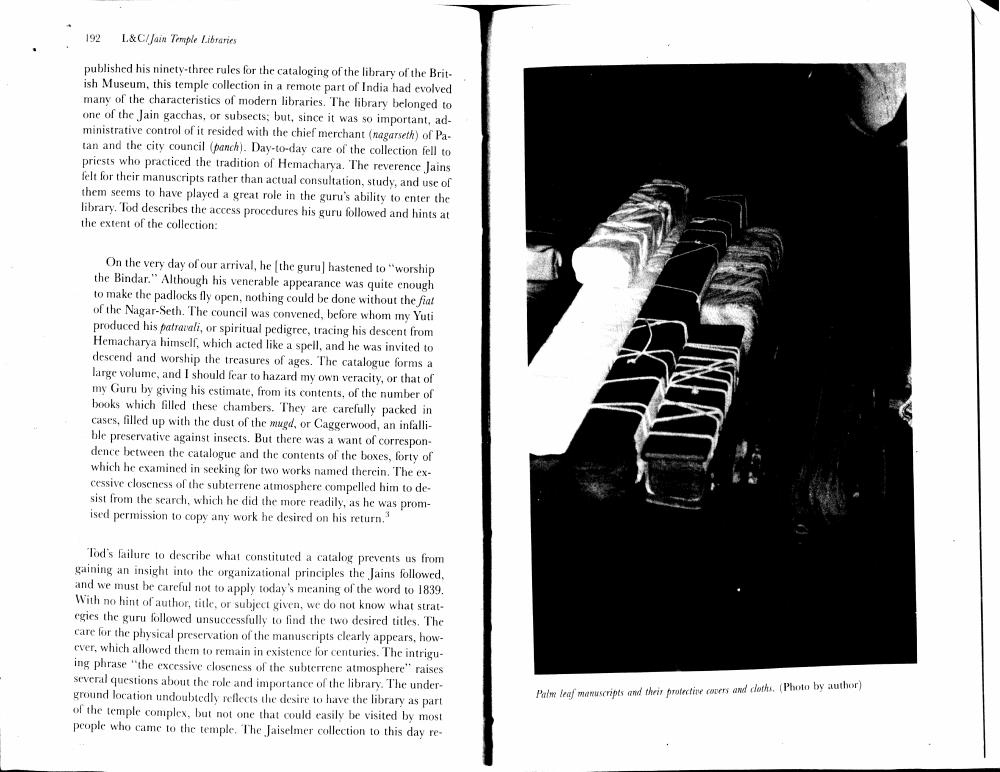Book Title: Western Discovery Of Jain Temple Libraries Author(s): Donald Clay Johnson Publisher: Donald Clay Johnson View full book textPage 3
________________ 192 L.&ClJain Temple Libraries published his ninety-three rules for the cataloging of the library of the Brit. ish Museum, this temple collection in a remote part of India had evolved many of the characteristics of modern libraries. The library belonged to one of the Jain gacchas, or subsects, but since it was so important, administrative control of it resided with the chief merchant nagarseth) of Patan and the city council (panch). Day-to-day care of the collection fell to priests who practiced the tradition of Hemacharya. The reverence Jains felt for their manuscripts rather than actual consultation, study, and use of them seems to have played a great role in the guru's ability to enter the library, Tod describes the access procedures his guru followed and hints at the extent of the collection: On the very day of our arrival, he the guru hastened to "worship the Bindar." Although his venerable appearance was quite enough to make the padlocks fly open, nothing could be done without the fiat of the Nagar-Seth. The council was convened, before whom my Yuti produced his patrovali, or spiritual pedigree, tracing his descent from Hemacharya himself, which acted like a spell, and he was invited to descend and worship the treasures of ages. The catalogue forms a large volume, and I should fear to hazard my own veracity, or that of my Guru by giving his estimate, from its contents of the number of books which filled these chambers. They are carefully packed in cases, filled up with the dust of the mud, or Caggerwood, an infallible preservative against insects. But there was a want of correspondence between the catalogue and the contents of the boxes, forty of which he examined in seeking for two works named therein. The excessive closeness of the subterrene atmosphere compelled him to de sist from the search, which he did the more readily, as he was promised permission to copy any work he desired on his return." Tod's failure to describe what constituted a catalog prevents us from gaining an insight into the organizational principles the Jains followed, and we must be careful not to apply today's meaning of the word to 1839. With no hint of author, title, or subject given, we do not know what strategies the guru followed unsuccessfully to find the two desired titles. The care for the physical preservation of the manuscripts clearly appears, however, which allowed them to remain in existence for centuries. The intriguing phrase "the excessive closeness of the subterrene atmosphere" raises several questions about the role and importance of the library. The underground location undoubtedly reflects the desire to have the library as part of the temple complex, but not one that could easily be visited by most people who came to the temple. The Jaiselmer collection to this day re Palm leaf manuscripts and their protective cars and cloth. (Photo by authorPage Navigation
1 2 3 4 5 6 7 8
